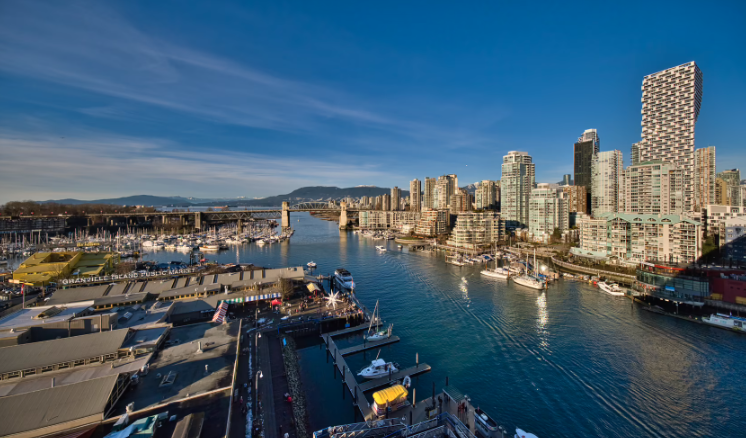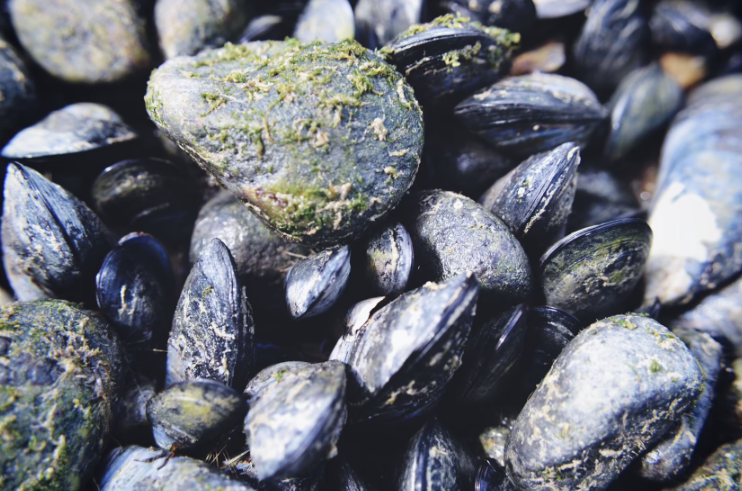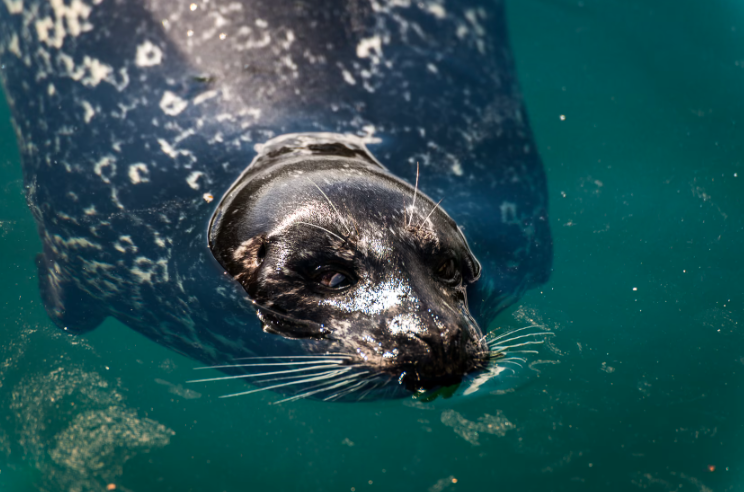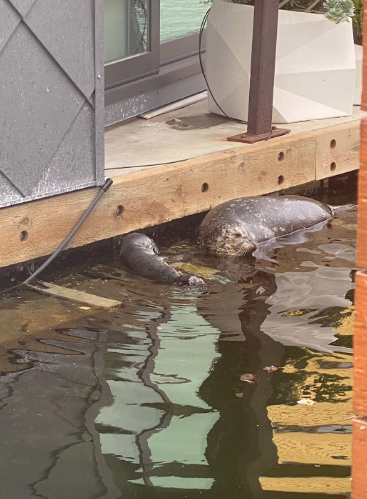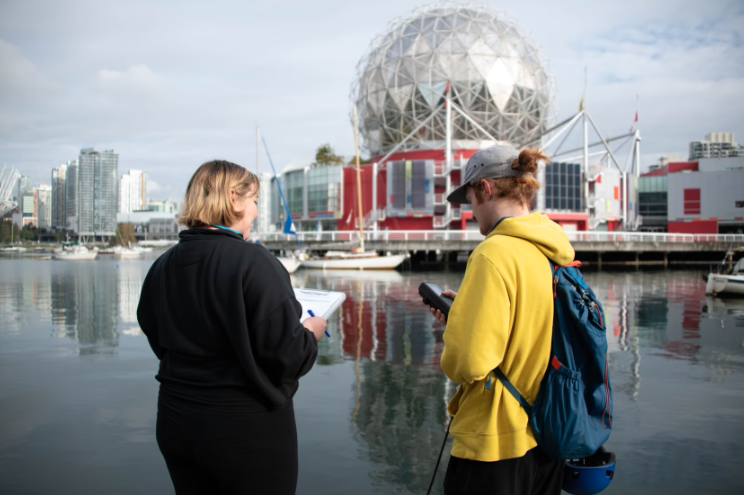The Wild Residents of False Creek
By Melanie Stirling
In the heart of Vancouver, you’ll find one of the most popular urban areas to explore by foot, bike, or boat, False Creek. This is a special location to all Vancouverites, one that hosts popular sites along its shores such as the Seawall, Granville Island, and Science World. But to us here at Fraser Riverkeeper, it acts as a unique marine ecosystem that we get to work and play at as we sample the waters of False Creek year-round to provide accessible water quality data.
A view of False Creek and the Vancouver skyline from the Granville Bridge. Photo: Chris Rycroft, Flickr.
From spending so much time along this narrow inlet, we have gotten to intimately know this special ecosystem and some of the neat creatures that reside here. Let's get to know some of them!
One species you’re sure to spot happily clinging to boats, motors, vegetation, or pretty much any exposed shore in the intertidal zone, are mussels. The most commonly found mussels in British Columbia are blue mussels. These are easy to spot due to their distinctive bluish-black shells and flattened teardrop shape.
Blue mussels. Photo: i threw a guitar at him., Flickr.
Mussels can be a great tool for helping to monitor water quality and tracking bioaccumulation in aquatic food webs and are considered to be “ecosystem engineers” because they filter a lot of water when they eat, helping to make the water more suitable for themselves and other organisms. A single mussel can filter 38L of water per day! Pretty impressive for a mollusk if you ask us.
A forage fish that we sometimes get lucky enough to see gliding through the waters of False Creek are herring.
Pacific herring. Photo: False Creek Fishermen's Wharf, Facebook.
False Creek used to be blanketed with beds of eelgrass, which herring would use as a safe spot to lay their eggs. Since industrialization of the area, eelgrass is no longer abundant here, which also means that herring are no longer present in large numbers. However, since 2011, the organization Squamish Streamkeepers, have been nurturing a small population of herring in False Creek that were reintroduced by accident when herring boats arrived with their hulls covered with viable herring eggs. Each year they work to provide the herring with a clean place to spawn at the Fisherman's Wharf by hanging nets and covering pilings with fish-friendly materials. This unique technique of habitat restoration has helped to restore the local herring spawning and rearing habitat of False Creek.
Another species we often see are cormorants. These are seabirds with dark plumage and a long, thin, and sharply hooked bill that’s used to expertly catch fish.
A cormorants. Photo: Becky Matsubara, Flickr.
These birds have some special characteristics that make them easy to spot along False Creek. They are known to be exceptional divers and can be seen piercing the water’s surface with superior form. They can also be easily spotted holding their wings out in the sun to dry off, offering a unique sight where they look frozen in pre-departure. Next time you’re out walking along the Seawall by False Creek, make sure to look up, you may just catch a cormorant mid-suntan.
Another species that frequents the area, and is definitely a crowd favourite, is the harbour seal.
A harbour seal. Photo: Darren Kirby, Flickr.
These water dogs frequent the area whether it be looking for some fish and crustaceans to snack on or an empty dock to lounge on. They are a keystone species in marine ecosystems and not only help to maintain balanced food webs, but they also aid in cycling nutrients throughout the water column. We have been fortunate enough to get to know one of the resident seals, a mother who wanders into Sea Village to have her pups each year!
A mother harbour seal and her pup at the Sea Village Marina. Photo: Fraser Riverkeeper.
With one of our trusty trash skimmers, Seabin Seagal, being located here, we spend quite a bit of time around Sea Village Marina and hope to see her again this year. Make sure to keep an eye out for harbour seals next time you’re by the water, they may just pop up to say hello.
False Creek is a unique ecosystem that we are lucky enough to spend so much time enjoying while also working to protect it.
Sadie Caron, our Program Manager and Fraser Riverkeeper, and one of our volunteers water sampling on False Creek. Photo: Fraser Riverkeeper.
If you want the chance to get up close and personal with these creatures while helping to make their home a better and healthier place, sign up here to volunteer with us for one of our water sampling or waste characterization sessions. We look forward to exploring False Creek, and all it has to see and offer, with you.
Sources
Zebra and quagga mussel facts - Province of British Columbia
Using Mussels to Monitor the Environment | Let's Talk Science
Using Mussels to Monitor the Environment | Let's Talk Science
False Creek herring offer real hope for a sustainable population in Burrard Inlet
Herring Restoration in False Creek Vancouver – Squamish Streamkeepers

